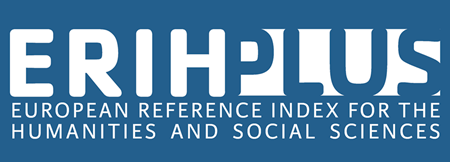SYNTACTIC FEATURES OF TRANSLATING THE AUDIOVISUAL TEXT OF THE TV SERIES LISEY’S STORY BY STEPHEN KING
DOI:
https://doi.org/10.32782/folium/2025.7.23Keywords:
audiovisual translation, syntactic transformations, dubbing, adaptation, communicative effect, structural changes.Abstract
This article presents a comprehensive analysis of syntactic transformations in the translation of audiovisual texts from English into Ukrainian, focusing on the series Lisey’s Story. The study examines the original English dialogues alongside their Ukrainian counterparts to identify common patterns of syntactic adaptation. The research demonstrates that translators frequently employ a range of syntactic transformations, including sentence restructuring, conversion of declarative sentences into exclamatory forms, shortening of full statements into concise conversational utterances, and changes in grammatical subjects. These transformations are primarily motivated by the need to adapt the text to the norms of the Ukrainian language and to ensure naturalness, emotional expressiveness, and fluency in dubbed speech. An essential aspect of the translation process is the preservation of the communicative effect: even when the translation deviates from literal equivalence, it retains the intention, emotional tone, and dynamic rhythm of the original dialogue. The study also highlights the role of syntactic changes in enhancing the expressiveness and readability of the translated text, thereby improving the audience’s reception and comprehension. The findings confirm that syntactic transformations are not merely mechanical adjustments but constitute a key strategy for stylistic and communicative adaptation in audiovisual translation. Future research perspectives include the expansion of the corpus to other genres of audiovisual texts and the comparative analysis of syntactic strategies in translations by different translators, which would allow a deeper understanding of both universal and culture-specific approaches in translation practice. Overall, the study contributes to theoretical and practical knowledge in translation studies and provides valuable insights for translator training and the development of guidelines for audiovisual translation.
References
Андрієнко, Т. П. (2014). Переклад як когнітивно-комунікативна діяльність. Наукові записки Ніжинського державного університету ім. Миколи Гоголя. Серія: Філологічні науки, 3, 13–17.
Гаман, А. І., & Чайковська, О. Ю. (2023). Кінопереклад як вид аудіовізуального перекладу. Закарпатські філологічні студії, 28(2), 137–141.
Дойчик, О. Я., & Бендак, Ю. О. (2023). Особливості відтворення ідіостилю Дж. Гріна в українському перекладі (на матеріалі романів Paper Towns та The Fault in Our Stars). Folium, 2, 26–33. https://doi.org/10.32782/folium/2023.2.4
Матіяш-Гнедюк, І., & Курляк, М. (2025). Відтворення обсценної лексики в українському перекладі телесеріалу Cyberpunk: Edgerunners. Folium, 6, 101–107. https://doi.org/10.32782/folium/2025.6.14
Орєхова, О. І. (2013). Теоретичні засади кіноперекладу: Історичний аспект. Наукові записки Ніжинського державного університету ім. Миколи Гоголя. Серія: Філологічні науки, 3, 164–170.
Перванчук, Т. Б. (2021). Аудіовізуальний переклад: Основні види та особливості. Вчені записки ТНУ ім. Вернадського. Серія: Філологія. Журналістика, 32(71) (4, ч. 2). https://www.philol.vernadskyjournals.in.ua/journals/2021/4_2021/part_2/22.pdf
Шахновська, І. І., & Кондратьєва, О. В. (2019). Прагматична адаптація під час перекладу англомовних анімаційних фільмів. Науковий
вісник Міжнародного гуманітарного університету. Серія «Філологія», 40, 96–99.
Великорода, Ю., & Тороній, Д. (2023). Відтворення авторської картини світу в аудіовізуальному перекладі: Дублювання та субтитрування (на матеріалі перекладу серіалу Відьмак). Folium (Cпецвипуск), 40–47. https://doi.org/10.32782/folium/2023.3.5
Basil, H., & Munday, J. (2014). Translation theories. London & New York: Routledge.
Cronin, M. (2009). Translation goes to the movies. New York: Routledge.
Díaz Cintas, J. (2008). The didactics of audiovisual translation. Amsterdam: John Benjamins.
Díaz Cintas, J., & Remael, A. (2007). Audiovisual translation: Subtitling (1st ed.). Routledge. https://doi.org/10.4324/9781315759678
Díaz Cintas, J., Orero, P., & Remael, A. (2007). Media for all: Subtitling for the deaf, audio description, and sign language. Amsterdam &
New York: Rodopi.
Gottlieb, H. (1998). Subtitling. In M. Baker (Ed.), Routledge encyclopaedia of translation studies (pp. 244–248). London: Routledge.
Karamitroglou, F. (2000). Towards a methodology for the investigation of norms in audiovisual translation. Amsterdam: Rodopi.
Vinay, J. P., & Darbelnet, J. (1995). Stylistique comparée du français et de l’anglais: Méthode de traduction (J. C. Sager & M. J. Hamel, Eds.).
Amsterdam & Philadelphia: John Benjamins.
Zabalbeascoa, P. (2008). The nature of the audiovisual text and its parameters. In J. Díaz Cintas (Ed.), The didactics of audiovisual translation (P. 21–38). Amsterdam: John Benjamins.












